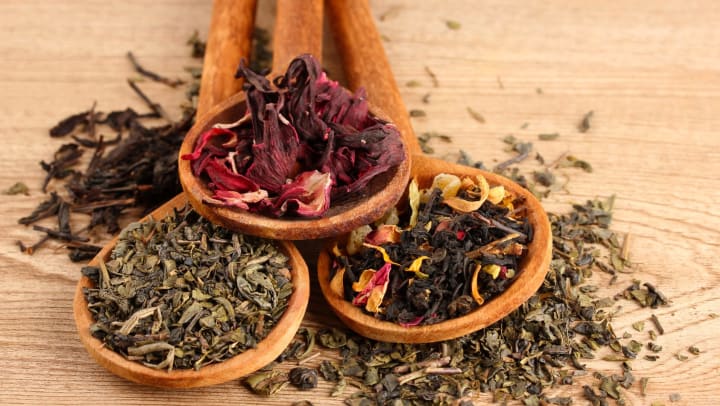Is there anything nicer than wrapping your hands around a warm cup of tea on a brisk fall morning? It’s hard to find another act so simple and yet so pleasing. Get the most out of your tea drinking experience by choosing your brews with care.
Tea Making
Types of tea bags vary almost as much as tea flavors do! Triangle or pyramid shaped tea bags have become popular in recent years because the shape of the bag allows more water to circulate through the herbs or tea leaves. Unfortunately, most of these tea bags are made out of plastic, and because they are single-use, a daily cup of tea can quickly take its toll on the environment and your body. Plastic mesh teabags shed microplastics into water, and heating can increase this shedding effect. Paper tea bags are a more sustainable choice, but they are flimsier and still use plastic glue to seal. One alternative is to purchase a stainless steel tea infuser and loose-leaf tea. Loose-leaf tea can also be added directly to water and then strained over a mesh wire strainer into a cup if you don’t want to purchase a tea infuser. These methods take a touch longer, but that’s not necessarily a bad thing—making tea is a contemplative act, not one to be rushed through.
Tea for Health
The healing nature of tea comes not just from its ability to slow you down. Many tea leaves contain medicinal properties. Green tea is full of antioxidants known to have an anti-inflammatory effect. Indeed, a good cup of strong green tea tastes like a tonic: pungent, complex, and nourishing. Herbal teas are also powerful and can be used strategically to ease discomfort from indigestion, common colds, irritable bowel syndrome, headaches, and more. As fall turns to winter, consider shopping for seasonal tea blends that include herbs such as peppermint or licorice root.
Fall Teas to Try
Peppermint contains menthol, which creates a cooling sensation and increases blood flow throughout the body. Because of this, peppermint can serve as a muscle relaxant and pain reliever, which make it useful for relieving bloating and stomach pain. Peppermint’s antibacterial and antiviral properties can help clear the sinuses—a whiff of steam rising off a cup of peppermint tea is reminiscent of an inhale of Vicks® VapoRub™.
In addition to peppermint tea, many tea companies make some version of a throat comforting tea blend, usually made of a combination of slippery elm root, licorice root, marshmallow root, and rosehips. The slippery elm in such teas helps to create a lubricating coating on your throat that can ease symptoms of soreness. Licorice root can have a similar effect on the throat and also works to loosen and expel mucus from the body. At the store, look for teas that contain these herbs—or make your own loose leaf blends based on your personal taste preference. You can purchase herbs online or in co-ops and some grocery stores.
A cup of tea can start your day energetically or help you wind down depending on the blend. When buying tea, look for tea that comes in paper tea bags, or brew your own from loose leaf tea. And don’t forget that a spoonful (or two) of honey can elevate a cup of tea. We won’t tell how much you add!

